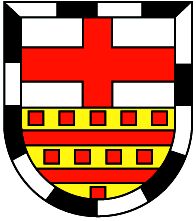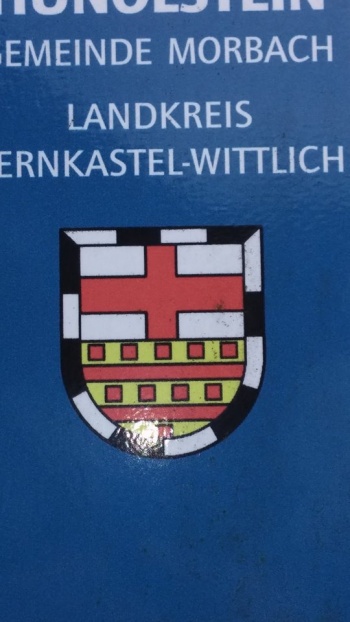Morbach (Bernkastel-Wittlich): Difference between revisions
Jump to navigation
Jump to search
Knorrepoes (talk | contribs) m (Text replacement - "{{de}}" to "") |
Knorrepoes (talk | contribs) m (Text replacement - "{| class="wikitable"↵|+Official blazon↵|-↵|'''German'''↵| ↵|-↵|'''English''' ↵| {{blazon wanted}}↵|}" to "{| class="wikitable" |+Official blazon |- |'''German''' | blazon wanted |- |'''English''' | blazon wanted |}") |
||
| Line 13: | Line 13: | ||
|- | |- | ||
|'''German''' | |'''German''' | ||
| | | blazon wanted | ||
|- | |- | ||
|'''English''' | |'''English''' | ||
| | | blazon wanted | ||
|} | |} | ||
Revision as of 07:13, 6 April 2023
MORBACH
State : Rheinland-Pfalz
District (Kreis) : Bernkastel-Wittlich (until 1969 Bernkastel)
Additions : 1975 Bischofsdhron, Elzerath, Gonzerath, Gutenthal, Haag, Heinzerath, Hinzerath, Hoxel, Hundheim, Hunolstein, Merscheid, Morscheid-Riedenburg, Odert, Rapperath, Wederath, Weiperath, Wenigerath, Wolzburg
| German | blazon wanted |
| English | blazon wanted |
Origin/meaning
The arms were granted on May 3, 1937 (to the then Amt Morbach).
The bordure of silver and black symbolizes the fact that the area belonged to Preussen (Prussia). The cross is the symbol of the State of Trier, the lower half shows the arms of the Vögte von Hunolstein. Historically the area was partly part of Trier and partly owned by the Vögte von Hunolstein.
| The arms in the town (image Ralf Fischer) |

